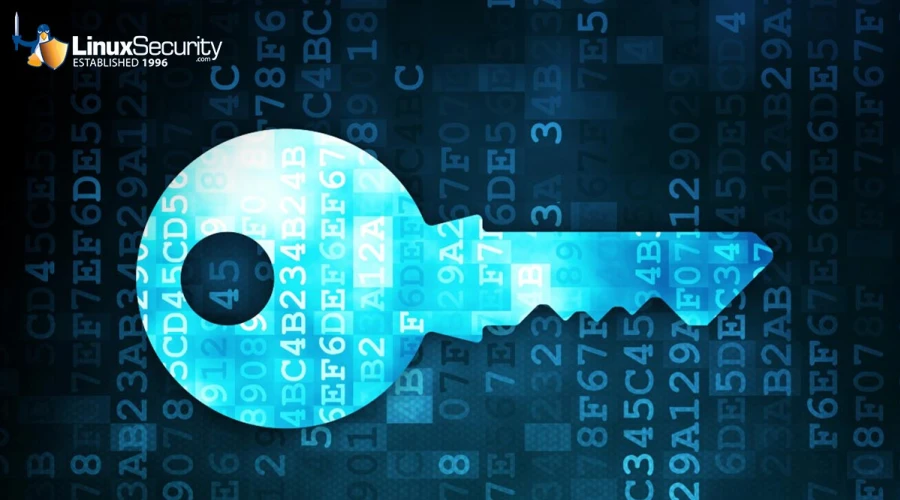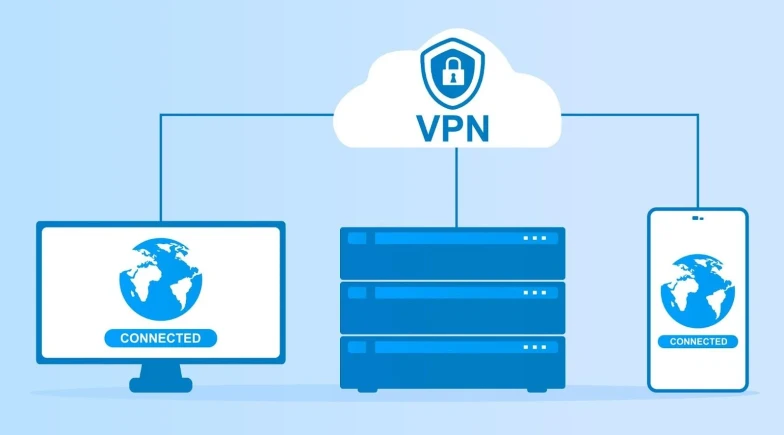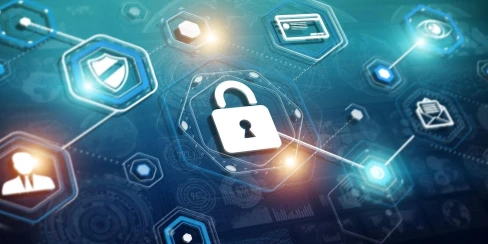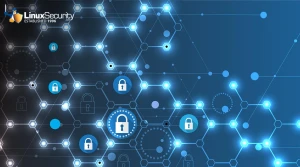How to Build an Encryption Strategy to Protect Your Online Identity

In today’s world, almost every part of our lives is directly or indirectly linked to the Internet. As cyberattacks in network security grow more advanced, our sensitive data faces more risk. Knowing how to protect your online identity is now a necessity.
Encryption as an online protection tool can help keep our data safe against malicious hackers and their confidentiality-based exploits in cybersecurity. This article will explore setting up an encryption strategy and how Linux tools can assist with overall data and network security.
How Can Encryption Help Protect Your Online Identity?
Encryption converts plaintext into ciphertext, so messages require a key to decipher the jumbled information. Cybercriminals cannot read this data. As a result, we are making encryption strategies an essential component in protecting sensitive intel.
Here are the two primary encryption forms:
- Symmetric encryption is simple and fast, using the same key to encrypt and decrypt data. The key must be kept secret and shared only between the sender and receiver. Symmetric key encryption is best used for small amounts of data, such as secure file transfers or encrypting and decrypting hard drives.
- Asymmetric encryption uses two different keys: a public and a private key. The public key encrypts the data, while the private key decrypts the data. Asymmetric key encryption is best for large amounts of data or to secure communication between two parties, such as email or instant messaging.
How Do You Build an Encryption Strategy?
You should use symmetric and asymmetric encryption when building your strategy, as this will help you achieve the highest data and network security levels. You can protect your online identity and personal information from network security threats like phishing scams and malware attacks with encryption. Here are a few ideas to consider when setting up your security strategy.
Data Classification and Data Medium
Data classification provides a ranking for each data type to enable the appropriate protection controls. Here are the primary data classification levels and examples:
- Confidential: Online banking information
- Private: Email subscription to a news website
- Public: Social media profile picture
Each information level requires different protective controls. Email encryption differs from hard drives, which makes data classification tools quite helpful in ensuring your information is safe.
Encryption Key Management
Encryption key management involves generating, storing, and controlling the distribution and usage of encryption keys. Always keep your encryption keys safe and secure, as they are responsible for decrypting your data. If a hacker gains access to your encryption key, they can access the information you are trying to protect.
Here are a few encryption key management solutions to maintain security in your keys:
- Use a key management vault that is specifically designed to keep encryption keys safe
- Rotate the keys after every 60 days
- Use separate keys for different data types and mediums
- For extra protection, encrypt the encryption keys
Use a Virtual Private Network
Using a Virtual Private Network (VPN) is an excellent part of a network security toolkit that helps to protect your online identity. VPNs route the traffic from your endpoint (e.g., computer, laptop, mobile devices) to an intermediary server before forwarding it to the end server through an encrypted channel. 
Not only is your personal information protected by the VPN, but your online persona is also anonymous, as your IP address remains hidden, and the end server only sees traffic from the intermediary server.
Two-Factor Authentication
Two-Factor Authentication (2FA) offers a dual verification option to add more security to your online identity. 2FA could be answering a security question, inputting a code received via email, or accepting access via push notification.
A popular 2FA option is a One-Time Password (OTP). Once you provide your initial credentials, you get a text message, an email, or a notification through an authentication app containing a code that you will enter to confirm your identity. OTP is a one-use-only code that has an expiration date.
Strong passwords are effective but do not pose the same protection levels as dual authentication, which can prevent access to your online information even if someone has your credentials. The hacker cannot log in if someone can access your Facebook credentials and you have 2FA. After entering the username and password, they would be required to enter the 2FA/OTP, thus ending their infiltration attempt since they do not have the device that holds the opportunity to input the 2FA/OTP methods.
Security Testing Tools
Security testing tools are an effective and quick way to enhance online protection. You can test for cybersecurity vulnerabilities within networks, applications, websites, and operating systems. Also known as penetration testing, automated security testing tools for web applications provide valuable information regarding your system's current data and network security. The detailed reports and recommendations help you spot potential gaps in your system so that you can utilize security patching before cybercriminals can access these network security issues.
How Can Linux and Open-Source Tools Help Protect Your Online Identity?
Linux and open-source network security toolkits provide a multitude of encryption possibilities. One of Linux's most well-known open-source encryption tools is GnuPG (GNU Privacy Guard). The OpenPGP standard for encrypting and signing e mails can be implemented utilizing GnuPG, which also uses symmetric and asymmetric encryption to give your online communications high data and network security. Install GnuPG from GnuPG.org.
mails can be implemented utilizing GnuPG, which also uses symmetric and asymmetric encryption to give your online communications high data and network security. Install GnuPG from GnuPG.org.
Here are the key features of GnuPG:
- Open-source and freely available.
- Accessible on various platforms like Windows, Mac, and Linux.
- Uses encryption techniques to protect essential data from unauthorized access.
- Digital signatures verify the authenticity of data.
- Command line interface makes it flexible for integration with other applications.
- Key management systems help generate, store, and manage encryption keys.
- Compatible with OpenPGP and S/MIME standards for email encryption and signing.
VeraCrypt is an open-source disc encryption program well-liked throughout Linux systems. This service can encrypt full hard discs, external hard drives, and USB devices to safeguard your data from online network security threats. Download Vercrypt from Github.
Here are the key benefits of VeraCrypt:
- Customize encryption settings to meet your needs.
- Create hidden volumes for confidential data.
- Can run from a USB drive without installation.
- Uses robust encryption techniques for data protection.
- Runs on Windows, Mac, and Linux.
- Requires strong passwords to access encrypted data.
- Data is encrypted through symmetric techniques like AES.
In addition to GnuPG and VeraCrypt, many other open-source encryption tools are available for Linux, such as dm-crypt and LUKS. Each tool offers different levels of encryption and data and network security, so it is crucial to research and choose the right tool for your specific needs.
Encrypted Communication Using Signal
One of the fundamental elements of our online internet usage is communication. Unlike traditional messaging apps like Facebook Messenger, iMessage, and WhatsApp, utilizing open-source and secure communication applications offers added protection.
Signal, for example, is an open-source communication app that uses encryption to protect messages during transit and at rest. It is one of the most secure messaging apps available, resulting in its quick rise to popularity, especially for privacy- and security-conscious users.
Here are some advantages to using Signal encryption:
- End-to-End Encryption: Signal uses end-to-end encryption, so your messages and calls are encrypted between your device and the recipient's device. Therefore, nobody can access the content except for the sender and receiver, making it difficult for anyone to intercept or eavesdrop on your conversations.
- Open-Source Code: The application’s source code is available to the public. So, anyone can examine the code for privacy or data and network security issues. It also gives users confidence that nothing dishonest is happening behind the scenes.
- Verification of Contacts: Signal verifies all contacts to confirm that you're talking to the actual person and protects you from Man-in-the-Middle attacks in network security.
- Privacy-Focused Design: Signal focuses on privacy-enhancing technology, meaning they don't collect metadata or other user information. It is impossible to track your activity or identity online.
Final Thoughts on Building an Encryption Strategy to Protect Your Online Identity
Data and network security through protection and privacy-enhancing technology will always play a significant role online. We store and send personal data online so often that we sometimes forget about the dangers we could face. Credit card information, Social Security Numbers, bank account details, and contact information can all be compromised without the proper cybersecurity measures. Individuals and companies can secure their data and online identities by using and implementing the encryption network security toolkits and techniques discussed in this article.




















